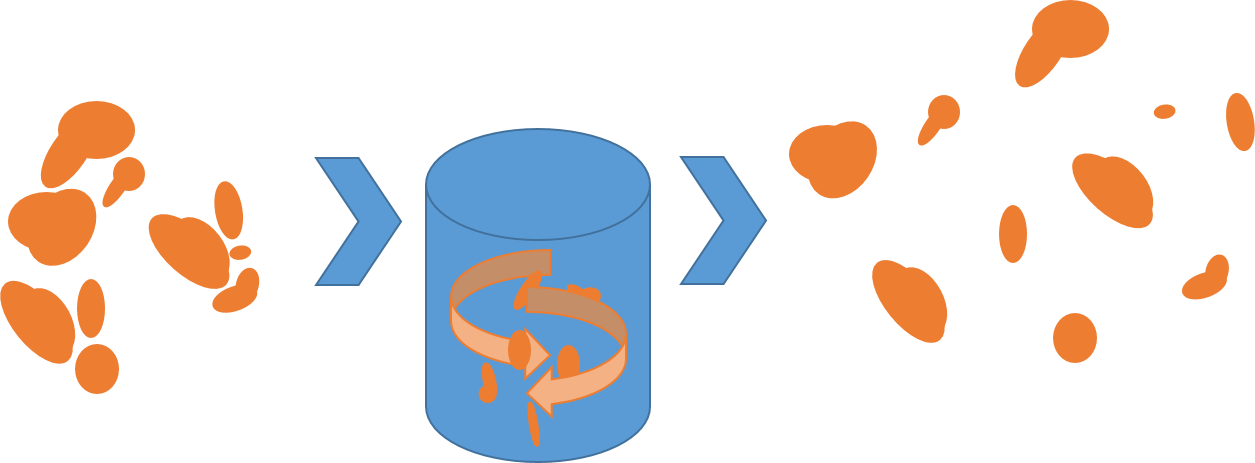What to Monitor When Using Pigments
Organic pigments are part of the colorant family; and their class is gaining momentum in the chemical industry. They come in a variety of forms: dry powder, dry pellet, or an aqueous dispersion. Many pigments are considered less toxic and less polluting than dyestuffs. Often, they are enhanced to provide performance qualities better than other coloration methods. Pigments also come with cost advantages, making pigmentation quite attractive.
Industries that utilize pigmentation include:
- Architectural
- Automotive and aerospace
- Ceramics
- Cosmetics
- Decorative coatings
- FDA Compliant goods
- Industrial coatings
- Leather
- Paints, stains, and varnishes
- Paper
- Plastics
- Printing inks
- Rubber
- Textiles, wovens, nonwovens, technical textiles, and geo textiles
- Yarn and solution-dyed fiber
As you’re researching which pigments are best for your process, keep size, shape, application method, and surface effects in mind.

How Particle Size Impacts Pigments
Dry pigment comes in several pigment particle shapes and sizes. Different sizes create surface chemistries that determine how the pigment will react when included into a formulation or process. Like a jigsaw puzzle, the pigment particle shape will determine how those particles fit in a film, coating, or extrusion. Many industries will pulverize or disperse the pigments even further to get a smaller pigment size which usually results in better coverage, less breakage, and fits within the width of the coating or fiber.

Choosing the right dry pigment is crucial when making a dispersion. A substandard or wrong pigment choice will lead to bad results. It also complicates the grinding, milling, wetting, shearing, stabilization, and rheology of the final dispersion.
Throughout the process, an inefficient pigment can add extra time, labor, and mechanical wear. Making amends for the wrong pigment extends a dispersion formula beyond what is needed.
The right-sized pigment will fit together with components of a coating, allowing you to achieve the outcome you desire. In aqueous pigment dispersions, when particles aren’t appropriately sized, agglomeration, flocculation and pigment flooding creates poor outcomes.

Inorganic pigments are easier to disperse than organic pigments. Because of this, when working with organic pigments, choosing the right one is even more important since the process is more involved.
Uneven Surfaces Due to Pigment Size
Since pigments often act as surface barriers against degradation, it is critical that the size of the pigment aligns with the other components in the formulation. Resistance against external forces such as ultra violet rays, weather, salt, corrosion, and others requires a uniform coating. If irregular or erratic spaces occur within the applied colorant film, it creates entry paths for various degradations. This can ultimately lead to a performance failure of the pigment colorant system or a mechanical failure of the formulated pigmented coating.
Methods of Pigment Application
There are many methods to apply pigments. Each method results in a different set of characteristics. It depends on your desired end result and industry when choosing the best application method.
Application methods for pigments include:
- DIY Brush or roller
- Immersion
- Injection molding
- Polymer extrusion
- Powder coating and solvent/waterborne liquid coating
- Roll coating
- Solution dyeing fiber/filament
- Spray application
- UV Curable
Technical Support for Specialty Pigments
Besides the most popular inorganic and organic pigments, also included are pearlescent and metallic pigment powders and easily-dispersed (ED) pigment powders. These two classes are very unique and utilize special chemistries and processes to create them. For the entry level or novice user, it can be difficult to achieve the best success using these technologies without proper technical support. Once you define the end results you’re looking for, connect with a pigment color specialist to develop a formulation that will work best for your desired effects.

Pigments provide a unique combination of aesthetics, service life, protection against external forces, technical performance, and color marketing. As their use across markets grows, knowing how to incorporate them into different application formulations will be critical. Maintaining the right pigment size and shape, choosing the pigment that best aligns with your application methods, and paying attention to the end appearance you’re going for are all areas to take into consideration as you make your pigment selections.


